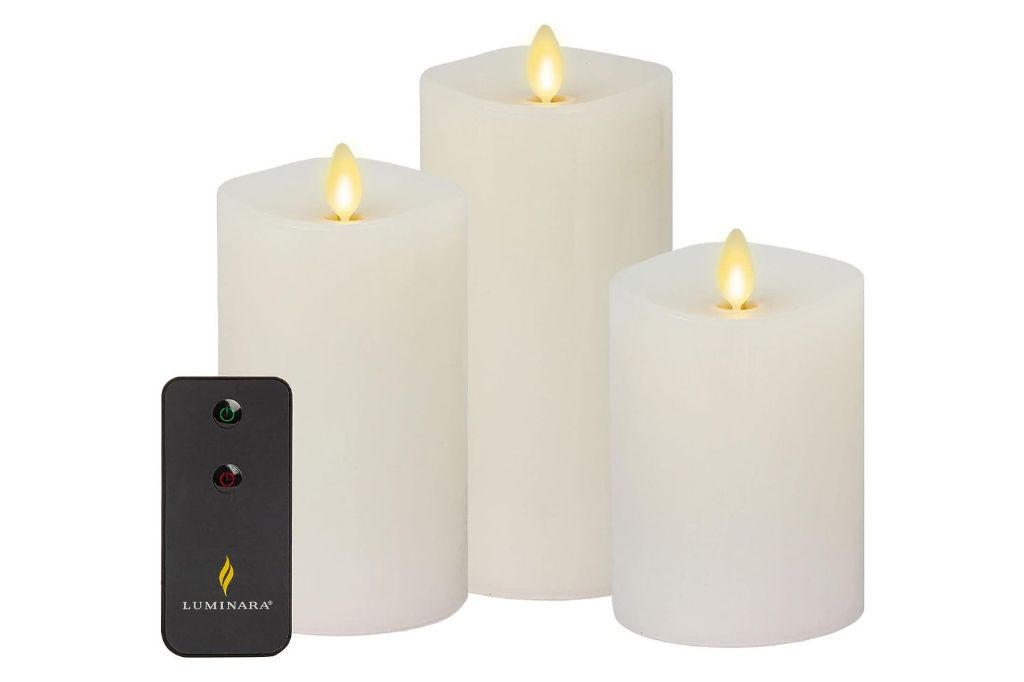How Long Do Battery Operated Votives Last?
What Are Battery Operated Votives?
Battery operated votives, also known as electric votive candles, are small candles powered by batteries instead of wax. They are designed to mimic the look and feel of traditional wax votive candles, but without the hassle of lighting and extinguishing real flames. Votive candles are typically used for decorative purposes, religious services, memorials, and ceremonies.
Battery operated votives consist of a plastic or glass holder, housing an LED light powered by batteries. When turned on, the LED flickers to create a realistic candle flame effect. The holder often contains slots to hold scented oils, allowing battery votives to also provide subtle fragrance like traditional candles. Most battery votives are designed to fit standard votive holders and candelabras, allowing them to seamlessly blend when displayed alongside real wax candles.
Compared to real candles, battery operated votives provide flickering ambience without the fire hazard. They also don’t produce smoke or dripping wax. Battery votives are convenient, safe, and easy to use, making them a popular modern alternative to traditional votive candles.
Types of Batteries Used
Battery operated votives typically use one of three common battery types: alkaline, lithium, or rechargeable nickel-metal hydride (NiMH). Each has its own advantages and disadvantages.
Alkaline batteries are inexpensive and readily available. However, they don’t last as long as lithium or NiMH batteries. Alkalines also can leak over time, potentially damaging the votive.
Lithium batteries are lighter weight, have a longer shelf life, and last up to three times longer than alkalines. However, they are more expensive. Lithiums also perform poorly in cold temperatures.
Rechargeable NiMH batteries last the longest per charge. They can be reused hundreds of times and are better for the environment. However, they have a high upfront cost and their charge slowly drains even when not in use.
Battery Life Expectancy
The lifespan of the batteries powering battery-operated votives can vary significantly depending on the type of battery used.
Alkaline batteries typically provide the longest battery life. You can expect an alkaline AA or AAA battery to run a votive for 30-60 hours of continuous use. Alkaline batteries will provide the best value when used intermittently with several hours of downtime between uses.

Lithium batteries rank second in terms of longevity. A lithium AA battery will usually run a votive for 15-40 hours of continuous operation. Lithium batteries are lighter weight and have a longer shelf life than alkaline batteries.
Standard zinc carbon batteries don’t last nearly as long as alkaline or lithium batteries in votives. You’ll probably only get 5-15 hours of burn time from a zinc carbon AA battery. These are one of the most affordable battery options but don’t provide the best value overall.
Finally, nickel metal hydride (NiMH) rechargeable batteries fall short of disposable battery types. A NiMH AA battery will typically last for 10-20 hours of continuous use in a votive. Rechargeable batteries can be more economical over the long run but require extra investment upfront.
The advertised battery life from the manufacturer provides a rough estimate. But the actual lifespan can vary quite a bit depending on the votive design, quality of the batteries, temperature conditions, and other factors.
Factors That Impact Battery Life
Battery life can vary substantially depending on several key factors. The main elements that affect battery duration in battery-operated votives are lighting, temperature, and battery brand/quality.
Lighting conditions play a big role in battery lifespan. Votives that are used in bright or direct sunlight will drain batteries faster than those burned in dim or indirect light. Battery life is maximized when votives are used in shaded areas or at night.
Ambient temperature also impacts battery performance. High temperatures tend to increase the rate of battery drainage, while cooler environments extend battery life. A votive burned in a hot, sunny window will likely run down its batteries faster than one used in an air-conditioned home.
Higher quality batteries, like those from leading brands such as Duracell and Energizer, tend to have longer lifespans than cheaper, generic batteries. Paying a little more for premium batteries often pays off with longer lasting performance in votives and other low-drain devices.
Extending Battery Life
There are some simple tips you can follow to extend the life of the batteries in your battery-operated votives:
Turn Off When Not in Use
One of the easiest ways to extend battery life is to turn off your votives when you’re not using them. Rather than letting them run continuously, switch them off during the day or when leaving the room. This avoids draining the batteries when the votives aren’t needed.
Use Quality Batteries
Opt for premium-brand alkaline or lithium batteries, like Duracell or Energizer. Quality batteries have a longer lifespan than generic or rechargeable batteries in votives. Rechargeable batteries lose their ability to hold a charge over time.
Take Out Batteries When Storing
Remove batteries from votives if storing them for extended periods. Batteries can still slowly drain even if the votive is off, so take them out to preserve the charge.
Avoid Extreme Temperatures
Keep votives away from extreme heat or cold, which can affect battery performance. Store them at room temperature to help batteries work optimally.
Clean Battery Contacts
Over time, battery contacts can accumulate dirt or corrosion. Use a cotton swab dipped in rubbing alcohol to gently clean the contacts in the battery compartment every few months.
With simple battery care and maintenance habits, you can maximize the lifespan of the batteries in your votives and avoid frequent replacements.
Signs Battery is Dying
There are a few key signs that indicate when the battery in a battery operated votive is nearing the end of its life:
Dimming Light: As the battery starts to lose power, the votive’s light will begin to dim and grow fainter. This is one of the first and most noticeable signs that the battery needs to be replaced soon. The dimming effect may be gradual at first, but will become more pronounced as the battery continues to drain.
Flickering: Along with the dimming light, the votive’s light may also start to flicker as the battery runs low on power. The flickering may be occasional at first but become more frequent over time. This flickering indicates the battery cannot provide a steady stream of power to keep the light burning strong.
Turning Off: Once the battery level becomes critically low, the votive may start turning off completely for periods of time. It may turn back on temporarily if the battery still has just a bit of power left, but will soon stop working altogether when the battery is fully depleted. This is the final sign that the battery must be replaced for the votive to operate properly again.
Safety Considerations
Battery operated votives, like any device powered by batteries, do come with some safety considerations. The main risks to be aware of are batteries leaking and overheating.
As batteries start to die, the chemicals inside can start to leak out. Battery acid leaks can damage surfaces, stain fabrics, and cause skin irritation if touched. To avoid leaks, inspect batteries regularly and replace them proactively as soon as any corrosion is noticed on the terminals. It’s also important to ensure batteries are inserted correctly, as improper installation can lead to premature leakage.
Overheating is another issue that can occur as batteries wear down. Excessive heat can cause batteries to rupture or explode in rare cases. Using the proper sized battery recommended by the manufacturer, avoiding mixing old and new batteries, storing votives properly when not in use, and not leaving batteries in constantly can help prevent problematic overheating.
By being vigilant about battery care and maintenance, the risks of leaks, overheating and other battery-related hazards can be minimized. Proper battery safety practices are easy to implement and help ensure battery operated votives remain safe and reliable.
Disposing of Batteries
When your battery operated votives finally stop working, it’s important to properly dispose of the used batteries to avoid harming the environment.
Many communities offer recycling programs that allow you to drop off used household batteries at designated collection points. Check with your local municipal or county government to find battery recycling locations in your area. Some retailers that sell batteries, like hardware stores or electronic shops, also collect used batteries for recycling.
If you can’t find a battery recycling program nearby, you can usually dispose of used household batteries in your regular trash. First, cover the terminals with duct tape or non-conductive electrical tape to prevent fires or explosions. It’s also recommended to place each battery in its own sealed plastic bag before putting it in the garbage.
Never put loose batteries in the trash, as they can still come into contact with other metals and ignite. Avoid burning batteries or disposing of them in fireplaces or incinerators for the same reason. The best option is always recycling batteries to recover some of the metals and properly contain any hazardous materials.
By recycling batteries when your battery operated votives stop working, you’ll keep toxic heavy metals like mercury, lead, and cadmium out of landfills and our waterways. This protects the environment and wildlife from contamination.
Alternatives to Batteries
While disposable batteries are convenient, there are eco-friendly alternatives for powering battery operated votives.
Solar Powered
Solar powered votives contain a small solar panel and rechargeable battery. They charge up during the day and provide light at night. No need to replace batteries! They’re a great option for outdoor use.
Rechargeable Batteries
Rechargeable batteries can be used hundreds of times. Though the initial investment is higher, they pay off in the long run. Look for nickel metal hydride (NiMH) or lithium-ion (Li-ion) batteries which have no memory effect.
Wired Votives
Wired votives simply plug into an outlet, eliminating the need for batteries. They provide continuous power. However, you’ll need to be near an outlet. Wired votives work well for permanent indoor displays.
Investing in an alternative to disposable batteries reduces waste and operating costs. Just be sure to get an option that provides sufficient light output for votives.
Popular Battery Operated Votive Models
Battery operated votives come in many styles and designs. Here are some of the top rated and best selling battery operated votive models on the market:
Yankee Candle Batteries for Votives
Yankee Candle makes high quality scented votive candles, and they also sell batteries specifically designed for use in their votive holders. These batteries last up to 120 hours and provide a reliable power source.
Homemory Flameless LED Candles
Homemory offers a set of flameless LED candles that resemble traditional votives. They come with batteries that provide up to 500 hours of light. Homemory candles have realistic flickering flames and attractive designs.
Bazinhur Votive Candle Batteries
The Bazinhur votive batteries come in packs of 24 or 48. They are compatible with most standard votive holders and feature multiple tab options for secure contact. According to reviews, these batteries can last for over 150 hours of continuous use.
Lighting EVER Votive Candles
Lighting EVER makes quality flickering flameless candles that use batteries. Their votive collection includes timers, remote controls, and different lighting modes. The batteries offer up to 500 hours of light per set.



